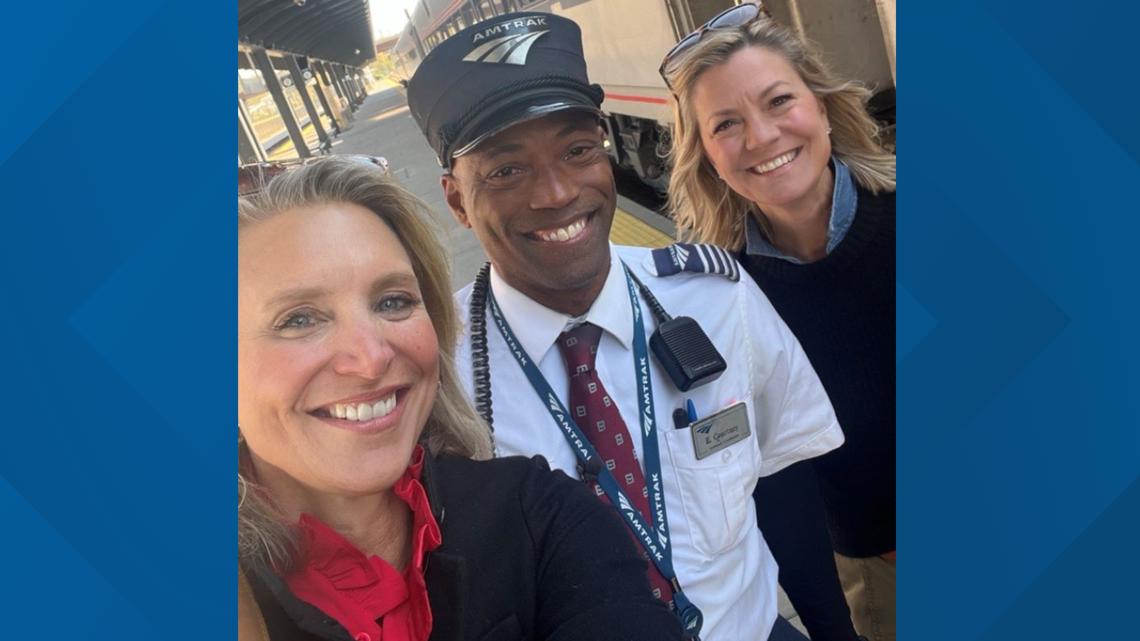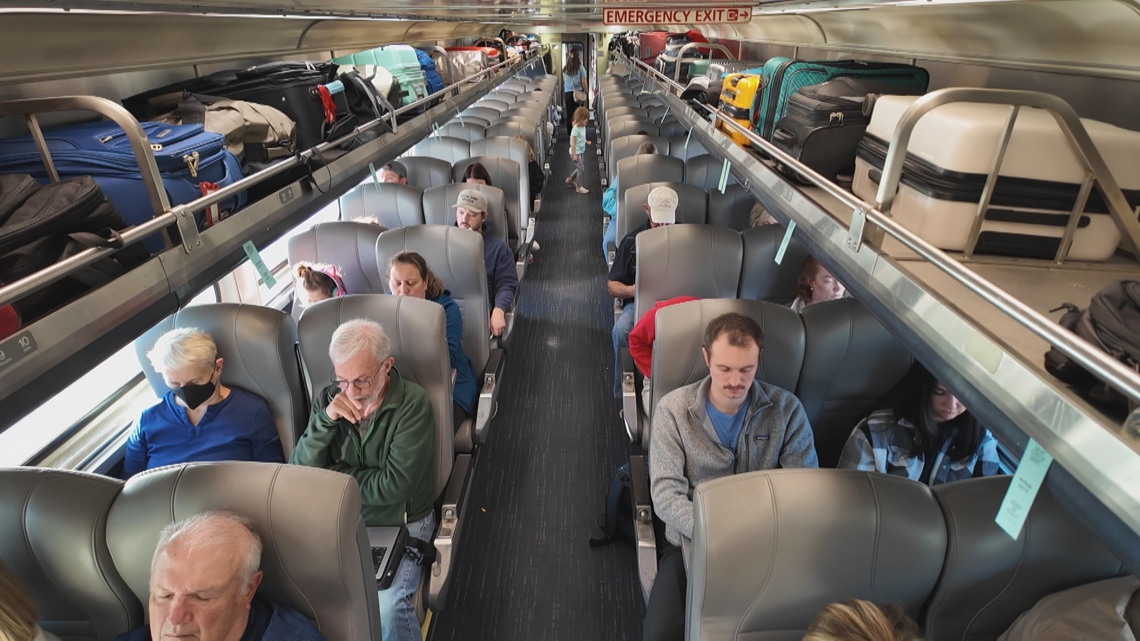Kare11
Group overseeing MPLS consent decree to host community sessions


Two sessions will be held this week to allow residents to ask questions about a 4-year police and city reform plan released in September.
MINNEAPOLIS — In March last year, the City of Minneapolis and the Minnesota Department of Human Rights reached a court-enforceable agreement to reform city and police conduct after investigators found both entities engaged in practices violating the Minnesota Human Rights Act.
Effective Law Enforcement For All was selected to oversee the consent decree as an independent body in February this year, and in September released a nearly 90-page, 4-year plan on police cameras, trainings, how reports are taken and other policy changes.
ELEFA president David Douglass says the nonprofit organization will host two sessions this week to bring community up to speed on the plan. The first is set to begin at 6 p.m. Wednesday at Sabathani Community Center.
The second session will be held 6 p.m. Thursday at North Community High School.
“We also want to explain how we do what we do … and how to engage the Minneapolis community in this process because that was central to the agreement,” Douglass told KARE 11 ahead of the meeting. “Perhaps most important, our goal is to promote understanding so we want to hear back and have plenty of time for people to ask their questions.”
Douglass says ELEFA will issue a semiannual report in the coming weeks and will hold another community session in four months.
This all stems from George Floyd‘s murder, and a similar settlement is pending with the U.S. Department of Justice after its investigators found city and police conduct violated the constitution and federal law. Both parties agreed to resolve the findings through a court-enforceable consent decree with an independent monitor.
But former President Trump opposed federal consent decrees in his first term, calling them “a war on police,” and terminating one in Chicago. It’s unclear what will happen in his second term, but Minneapolis is still promising reform.
The Office of Community Safety sent the following statement in response to KARE 11 inquiry:
“While negotiations with the Department of Justice have continued without pause, tonight’s community engagement session hosted by ELEFA is their first opportunity to talk with the people of Minneapolis since their selection as the Independent Evaluator for the MDHR settlement agreement and the release of their Evaluation Plan. This engagement goes to highlight the work well underway to implement the Settlement Agreement with the State. City leadership has been and will remain committed to reforming policing in Minneapolis and building a more just, equitable approach to community safety – regardless of who sits in the White House.”
-Commissioner Todd Barnette, Office of Community Safety
The Minnesota Department of Human Rights shared a similar message:
“The state consent decree between the Minnesota Department of Human Rights and the City of Minneapolis and Minneapolis Police Department is here to stay regardless of what happens at the federal level.”
-Spokesperson, Minnesota Department of Human Rights
Kare11
St. Paul schools invest in English Learning classes


St. Paul Public Schools hosts the highest population of English Learners in the state.
SAINT PAUL, Minn. — No matter where you’re from on the spinning globe, St. Paul Public Schools will welcome you.
State numbers show it is home to the highest population of English Learners (E.L.) in Minnesota. SPPS officials estimate 28% of their students are actively learning English, but the languages kids speak at home are always changing.
“When I first started here, most of my students were Asian,” Traci Buckle, a Como Park High School E.L and Science teacher said.
But after ten years in the district, her classrooms have evolved and Buckle said she sees more Spanish-speaking students. Administrators are noticing the same trend in E.L. students.
“The population of E.L. kids numbers-wise, is remaining the same, but the place of origin is changing,” said Sarah Schmidt de Carranza is the Executive Director of Multilingual Learning for SPPS.
Schmidt de Carranza said the district does not track students by home country. However, she said the district can assess trends in students who arrive at the district with inconsistent learning.
“The official title is Students with Limited or Interrupted Formal Education,” Schmidt de Carranza said. “We’re seeing more students coming from Latin America with those needs.”
Even when global conflict keeps churning, funding to help students doesn’t always keep up. According to figures provided to KARE 11 by the district, SPPS planned to spend $37.5 million dollars in 2023 on English Language services.
The state only provided $11.3 million, leaving a funding gap of $26.2 million dollars.
“Costs of everything have kind of skyrocketed over the last few years,” Schmidt de Carranza said. “There’s been increases in our labor contracts for both of our teaching staff and our bilingual educational assistance staff.”
Schmidt de Carranza said the district will pull from the General Fund to cover gaps, rather than cutting back E.L. services.
“It’s a non-negotiable,” Schmidt de Carranza said. “We spend money on the front end to educate our children to participate in a democracy, or we spend it on the back end taking care of needs that we should have taken care of in the first place.”
The investment in students with disrupted education is paying off quickly.
“I always dreamed to be a nurse to help the people back in my country,” Eh Ler Paw, a Como Park senior, said.
Paw came to U.S. from a refugee camp in Thailand during the COVID-19 pandemic. Despite struggling to learn English in remote classes, Paw eventually became fluent enough to tackle the subject she found most difficult: science.
“I will go to a university to study [nursing],” Paw said. “I’m excited and nervous to do the next step.”
Four years into learning English, she’ll graduate with her best foot forward.
“When I checked, she was 21st in her entire class as far as academics go,” Buckle said, who taught Paw for several years. “When people are bilingual and trilingual and multilingual, I mean, that’s a lot of skill they’re bringing into the classroom and this ability to problem solve.”
“They’re resilient. They’re just good kids.”
Kare11
Seeking answers after AG shuts down Minneapolis food charity


Minnesota Attorney General Keith Ellison said Jamal Osman and his wife, Ilo Amba, aren’t facing any charges, but Amba agreed to discontinue Urban Advantage Services.
MINNEAPOLIS — It’s been nearly a week since Minnesota Attorney General Keith Ellison announced that he officially shut down a Minneapolis city councilor’s wife’s food charity tied to Feeding Our Future.
The couple, Councilor Jamal Osman and Ilo Amba, has yet to answer any questions about the nearly half a million dollars they allegedly received in federal funding.
Experts say it’s unlikely that money will ever be recovered, given some of the violations in this case accuse Amba of poor record keeping and never filing taxes.
And while she, nor her husband, aren’t facing any charges, and don’t have to answer to anything, this saga isn’t over yet.
“Once the entity sees the writing on the wall that they’re not going to win this one, they’ll say, OK, we’re done, and pack it up and agree to do that,” said former federal prosecutor and current law professor at the University of St. Thomas Mark Osler.
Ellison and Amba agreed to dissolve the charity called Urban Advantage Services (UAS) in October, but documents show it ceased operations in January of 2022.
Osman was at Wednesday’s Committee of the Whole meeting, but left and came back. The second time he left for good before the meeting was over and we couldn’t ask him any questions.
KARE 11 has reached out to Osman by phone, email and at his city office several times. He was also a no-show at the city’s same meeting on Tuesday.
The offices of UAS are also long abandoned in downtown Minneapolis. Failing to maintain a registered address is one of several violations Ellison says UAS racked up not long after it was started in 2020. He also claims it didn’t register with the Attorney General’s Office and its board of directors failed to meet.
He called the charity a fraudulent shell company that was created to perpetuate and tied to Feeding Our Future. That scheme exploited a federal program to feed hungry children during the pandemic that has since led to about 70 people facing charges, many of whom are already convicted.
Ellison says Ambo directed federal funding to herself, her family members and co-conspirators.
“Regardless of how it’s structured or perceived as cultural differences, that’s something that’s wrong and the government has to act on,” said Osler. “I know to some people it might seem about money, but it’s about the trust in government, it’s about the trust in charitable instincts and there was a real loss there.”
Documents show UAS was one of about two dozen related charities Ellison sued last year.
But dissolutions like these don’t preclude people from still facing consequences, depending on what, if any, evidence there is.
Some of which will play out next year as several more people already criminally charged in the Feeding our Future case are expected to start standing trial in February.
“This was a time when kids were hungry, there was a great need there, and there’s a really big moral wrong and there is a need to address that,” said Osler.
Kare11
What is it like to ride the Amtrack from Minneapolis to Chicago?

Since launching its Borealis route in May, ridership has exceeded even Amtrak’s expectations, hitting 100,000 riders in just five months.
ST PAUL, Minn. — It’s the Thursday of MEA weekend and St. Paul’s Union Depot is packed.
Bel and I are in line with 277 other people waiting to board the Borealis, Amtrak’s latest line that offers daily service from St. Paul to Chicago.
Shortly before noon, the conductor calls, “all aboard,” and the crowd starts making its way to the platform eager to claim their seats, which are first-come, first-served.


Every seat on this trip is taken, partly because it’s MEA weekend, but also because the popularity of the new line is “gangbusters,” according to Amtrak’s spokesperson, Marc Magliari.
Magliari says since Borealis launched in May, ridership has exceeded even Amtrak’s expectations, hitting 100,000 riders in just five months.
“If we could add more cars, we would,” Magliari said.
Bel and I are taking the train all the way to its final destination: Chicago’s Union Station. But there are 11 other stops along the way from Red Wing to La Crosse, the Wisconsin Dells and Milwaukee.


As we get underway and people settle into their seats, first-time riders are pleasantly surprised by the size of the seats and the amount of legroom they have. Also worth noting, on Amtrak, there are no middle seats.
Comfort is important because if you’re riding the Borealis all the way to Chicago, you’ll be in these seats for seven-and-a-half hours — about the same amount of time as driving.
So, why ride when you could fly or drive? Most passengers we spoke to said it was about the experience. Several fellow riders enjoyed the atmosphere, saying it was laid back and friendly. Other riders appreciated the price, which is typically lower than flying.
One-way tickets on the Borealis from St. Paul to Chicago start at $41, but like airlines, the pricing is dynamic so the higher the demand, the higher the price.
During peak travel times fares can go as high as $179, but for kids 2 to 12 years old, tickets are always half-price.


For members of the Beegle family, this trip is all about the kids. There are, after all, 17 kids in their group of 24.
When making plans for their family reunion in Wisconsin Dells, they chose the train because they have fond memories of a train ride with their grandparents 25 years ago.
A couple of cars over, Rhea and Dave Miller are making those same memories with their grandchildren, Cooper and Brooks. The Millers wanted to give the boys a taste of train travel to see what they think, so they booked tickets to Red Wing.
We stopped in Red Wing first, just 45 minutes into the journey. Each stop takes only about five to 10 minutes before we’re on our way again.
The snack bar is a popular site on board, where you can buy standard fare like a burger and chips as well as some adult beverages.
But if you’re looking for a full dining car with tablecloths and a menu, you’re on the wrong train.
You can find that — as well as a second-story observation deck and private sleeping — on the Empire Builder. It, too, travels daily from St. Paul to Chicago, but it originates on the West Coast and is more frequently delayed.
Back on the Borealis, Bel and I are pleasantly surprised by how fast the time has flown and how relaxed the ride has been.
We pull into Union Station at 7:15 p.m., all of us filing off the train and ready to start the next part of our adventure.




